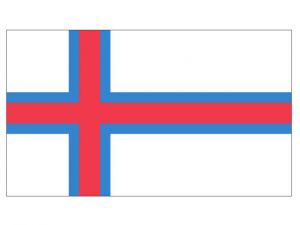Language/Faroese/Grammar/Regular-Verbs
Introduction
In this lesson, we will focus on the present tense of regular verbs in Faroese. We will also learn some of the most common regular verbs and their meanings. By the end of this lesson, you will be able to form and use the present tense of regular Faroese verbs with confidence.
Present Tense
The present tense in Faroese is used to describe actions that are happening now or that happen regularly. It is also used to make general statements about what one normally does or what is generally true. In English, the present tense is often formed by adding -s or -es to the base form of the verb for third person singular subjects (he, she, it). In Faroese, there are some changes to the verb endings depending on the subject, but the basic form of the verb stays the same.
Regular Verbs
Regular verbs in Faroese follow a predictable pattern when conjugated in the present tense. To form the present tense of regular verbs, simply remove the infinitive ending -a and add the appropriate present tense ending based on the subject. Here are the present tense endings for regular verbs:
- Singular
- Eg (I) - i
- Dú (you informal) - ar
- Hann/Hon/Hit (he/she/it) - ar
- Plural
- Vit (we) - a
- Tit (you plural) - a
- Teir/Teirra (they masculine/feminine) - a/ra
Let's look at some examples:
| Faroese | Pronunciation | English |
|---|---|---|
| Lesa | [leːsa] | read (1st person singular) |
| Dansa | [dant͡sa] | dance (3rd person singular) |
| Svara | [svaɹa] | answer (2nd person plural) |
| Mala | [maːla] | paint (3rd person plural) |
Note that the final -r of the verb stem is removed before adding the present tense ending. Also, for third person plural subjects, the ending -ra is used instead of -a for feminine subjects.
Common Regular Verbs
Here are some of the most common Faroese regular verbs and their meanings:
- Lesa - to read
- Skriva - to write
- Spæla - to play
- Vakna - to wake up
- Dansa - to dance
- Køva - to buy
- Heita - to be called
- Standa - to stand
Practice
Now it's time to practice conjugating regular verbs in the present tense. Here are some sentences with blank spaces. Fill in the blanks with the correct present tense form of the verb indicated in parentheses.
- Eg ___ (lesa) dagblaðið á morgni. (read)
- Hann ___ (dansa) aldrei á diskoteki. (dance)
- Tað ___ (køva) tvey egg í búðini. (buy)
- Teir ___ (standa) á bryggjuni og bíða eftir bátinum. (stand)
Answers:
- Eg lesi dagblaðið á morgni.
- Hann dansar aldrei á diskoteki.
- Tað køper tvey egg í búðini.
- Teir standa á bryggjuni og bíða eftir bátinum.
Conclusion
In this lesson, we learned about the present tense of regular verbs in Faroese. We saw that regular verbs follow a predictable pattern when conjugated in the present tense, and we learned some of the most common regular verbs and their meanings. We also practiced forming and using present tense verbs in context. Keep practicing and building your vocabulary, and you will continue to make progress in learning Faroese.

